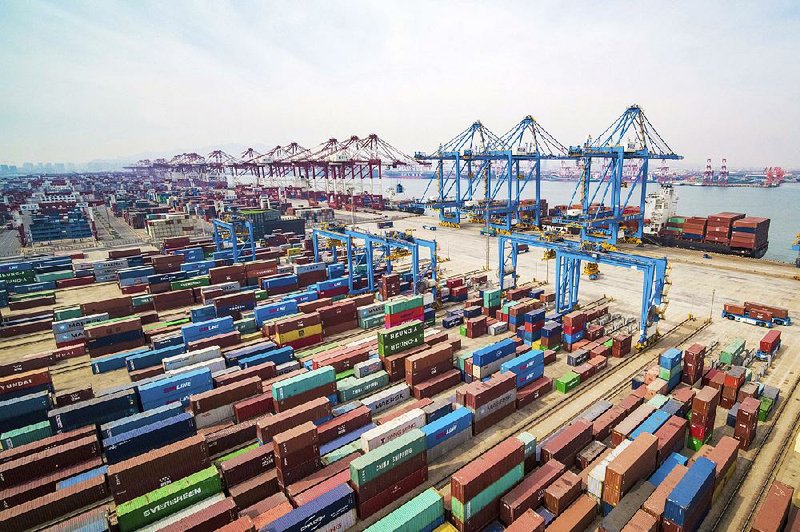BEIJING -- China's exports rebounded in March from a slump in February and sales to the United States rose despite President Donald Trump's tariff increases.
Exports rose 14.2 percent over a year ago to $198.7 billion, recovering from February's 20.8 percent contraction, customs data showed Friday. Imports fell 7.6 percent to $166 billion, compared with the previous month's 5.2 percent decline.
Exports to the United States rose 3.7 percent to $31.8 billion, recovering from February's 28.6 percent decline despite Trump's tariffs of up to 25 percent on $250 billion of Chinese goods.
Imports of American goods plunged 25.8 percent to $11.3 billion, hit by Chinese retaliatory duties and orders to buyers to find other suppliers.
The slump has added to pressure on Chinese leaders to make peace in a tariff war with Washington over Beijing's technology ambitions.
"Exports have yet to fully recover from a sharp slowdown late last year," said Julian Evans-Pritchard of Capital Economics in a report.
"China's exports improved in March, but the scale of the rebound was exaggerated by price increases and the Chinese New Year," Chang Shu and Qian Wan of Bloomberg Economics said in a statement. "The upward swing in the roller-coaster ride of exports therefore shouldn't be taken as a reason for optimism. The improvement isn't expected to be sustained given the tough external environment in 2019."
The Lunar New Year fell in 2019 in early February instead of mid-February in 2018, which likely aided March year-on-year comparisons. Big fluctuations in January-to-March trade data are mostly because of the Chinese New Year holiday around which many factories and companies shut down, Customs Administration spokesman Li Kuiwen said at a briefing in Beijing. "Relatively low" growth is from uncertainties in global demand, he said.
Chinese government spokesmen said Thursday that trade talks with Washington were making progress after nine rounds of negotiations. The latest three-day meeting in Washington last week dealt with technology transfer, intellectual-property rights, agriculture and enforcement.
Economists say a settlement appears increasingly likely. But they say even if that happens, this year's Chinese exports will be lackluster.
Washington is pressing Beijing to scale back plans for government-led creation of Chinese competitors in robotics and other technologies. Europe, Japan and other trading partners echo U.S. complaints those violate Beijing's market-opening commitments.
And China is reluctant to relinquish control over its domestic grain stockpiles, an issue that has been a sticking point in a broader U.S.-China trade deal, according to America's top agricultural trade negotiator.
China is unwilling to open its corn, rice and wheat markets to broader market forces that would allow for freer imports, Gregg Doud, the chief agriculture negotiator for the U.S. trade representative, said at an industry conference in Kansas on Thursday. China subsidizes its domestic corn and rice growers, which unfairly boosts supplies and limits imports, he said.
The impasse has disrupted trade in goods ranging from soybeans to medical equipment. The dispute has rattled financial markets and prompted the International Monetary Fund and other forecasters to lower their outlook for global economic growth.
"The reversal of U.S. tariffs would only provide a small boost to exports of around 1 percent to 2 percent," said Evans-Pritchard. "With global growth set to remain weak in the coming quarters, a strong rebound in exports therefore looks unlikely."
Chinese exports to the 28-nation European Union rose 23.7 percent over a year earlier to $33.1 billion. Imports of European goods fell 4.9 percent to $22 billion.
Exports to the United States grew by double digits through most of 2018 despite Trump's tariff hikes starting in July. But they slid in December once the full impact hit.
Exports to the United States in January and February fell 14.1 percent from a year earlier.
Information for this article was contributed by Joe McDonald of The Associated Press and by Michael Hirtzer of Bloomberg News.
Business on 04/13/2019
